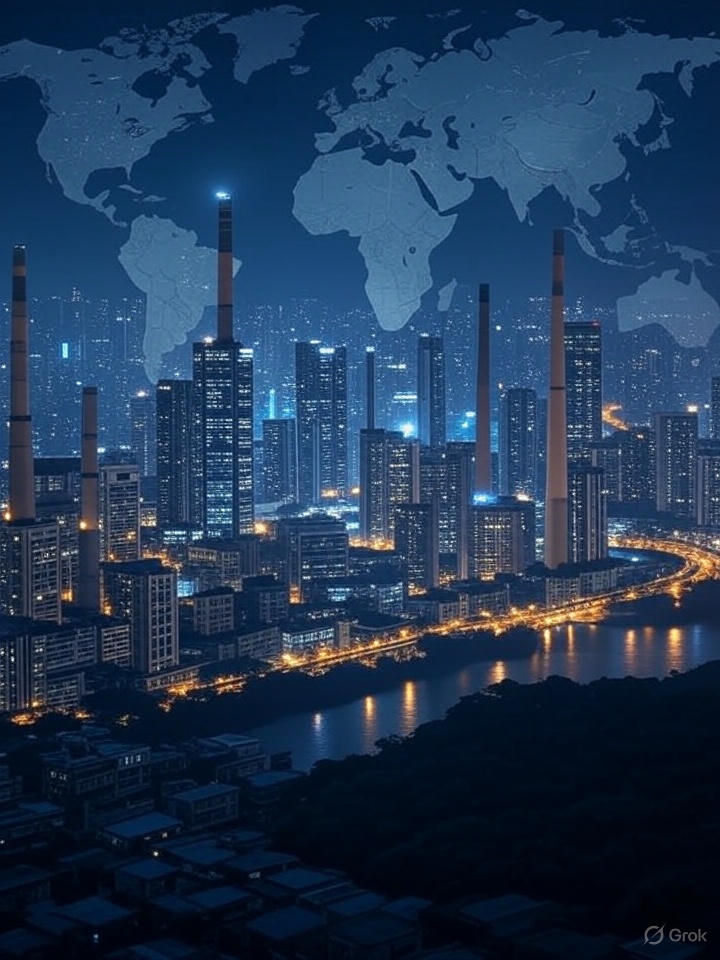The Silent Squeeze: The Middle Class and the Global Wealth Divide
- thebrink2028
- Jun 25
- 4 min read

India’s middle class, the engine of its economic story, is running on fumes. Earning ₹5 lakh to ₹1 crore a year, this 60% of the population juggles stagnant incomes against soaring costs, groceries, fuel, dreams deferred. Meanwhile, the ultra-rich ride a luxury wave, their wealth snowballing through investments most can’t touch. From New York to Nairobi, middle-class families face a similar squeeze, quietly fueling a global wealth transfer upward. Here’s what’s driving this divide.
The Middle-Class Grind: A Shrinking Wallet
Over the last decade, incomes for India’s middle class have inched up at a measly 0.4% annual rate, dwarfed by 5–6% inflation. A ₹1,000 grocery basket in 2013 now costs ₹1,800, halving purchasing power. Families skip savings, delay doctor visits, or second-guess every delivery order. Yet, spending stays high. Why? Credit is the glue holding it together.
Credit card debt has hit ₹2.92 lakh crore, with personal loans spiking 75% in four years. A 2024 consumer survey says 43% of Indian millennials spend to keep up with “aspirational” lifestyles, driven by social media’s glossy pressure. Savings are gutted: 50% of high-income Indians save less than 20% post-tax, and the middle class likely saves even less. Compare that to the US, where middle-class savings rates have dipped to 5–7%, down from 10% pre-COVID. It’s a fragile tightrope, EMIs for phones, cars, and homes keep up appearances, but the cracks are widening.
The Ultra-Rich Surge: Luxury and Locked-In Gains
While the middle class counts pennies, India’s ultra-rich are on a tear. By 2028, the number of individuals worth over $30 million will jump 50.1%, the fastest globally, outpacing China and the US (20–30% growth). The luxury market, think ₹15,000-per-square-foot flats in Mumbai’s Bandra or high-end watches, grows 15–20% a year, dwarfing global luxury’s 8% pace.
This isn’t just flashy spending. The ultra-rich build wealth through private equity, real estate, and startup opportunities the middle class rarely touches. India’s top 1% hold 27% of national wealth, a share climbing faster than in the US (32%) or China (30%). Tax policies tilt the game: long-term capital gains tax (12.5%) is half the top income tax rate (30%), favoring investors over salaried workers. The US, with its 20% capital gains tax, plays a similar hand.
Your ₹20,000 smartphone purchase? Part of it flows to corporations whose stocks pad elite portfolios. But it’s not a straight line, middle-class spending also funds taxes (28% GST on cars) and infrastructure. The real issue is access: the middle class lacks the capital or networks to chase high-yield investments.
A Global Echo: The Middle-Class Trap
India’s struggle isn’t unique. In the US, middle-income households ($50,000–$150,000) face 1–2% wage growth against 30% housing cost spikes since 2020. In the UK, 10% of middle-class families lean on debt for daily expenses. Emerging markets like Vietnam and Nigeria are the same: luxury booms (10–15% growth) while incomes trail inflation (5–10%).
Credit is the global crutch. India’s debt surge recalls China’s 2000s boom, when household debt soared 200% before regulation kicked in. Low interest rates in India and US, fuel borrowing but inflate assets, enriching investors. Post-COVID stimulus (₹2.5 lakh crore in India, $5 trillion in the US) juiced stock markets, leaving wage earners to battle inflation. The global top 1% now hold 50% of wealth, a gap widened by policy choices from Delhi to DC.
AI’s Shadow: Jobs on the Brink
White-collar jobs, a middle-class stronghold, face a new threat: AI. By 2030, 20–30% of India’s IT, finance, and BPO roles could be automated, risking ₹1.5 lakh crore in incomes for the 5.4 million-strong IT sector (8% of GDP). Globally, AI is displacing 1–2% of tech jobs yearly.
But it’s not doomsday yet.
Policy Gaps: Who Gets the Lifeline?
India’s Budget 2025 offer tax relief, saving ₹50,000–₹1.1 lakh for ₹16–50 lakh earners, but it’s a band-aid. High GST (28% on durables) and metro real estate (10–30 times annual incomes) overwhelm these gains. Urban housing schemes exclude most middle-class families, who earn too much for subsidies but too little for market rates.
Globally, relief looks different. The US erased $10,000 in student debt for 20 million in 2022. Germany’s €300 energy subsidies in 2023 cushioned inflation. India’s budget allocates just 7% to middle-class tax breaks, lagging peers. A hidden gap: rural-focused welfare schemes sideline urban middle-class needs.
Crypto’s Wild Card: Opportunity or Trap?
India’s crypto scene is unregulated yet it's buzzing, 20.1% of investments flow from Delhi-NCR, with some tokens posting 1,373% returns in 2024. It’s a glimpse of high-yield investing for the masses. But it’s a minefield: 93% of retail F&O traders lose money, and crypto’s swings are wilder. Taxes (1% TDS, 30% capital gains) and scams ($3.7 billion globally in 2024) scare off many.
The middle class needs a reset.
Financial literacy, only 27% of Indians are financially literate, vs. 65% in the US.
The middle class globally is stuck, stagnant incomes, rising costs, wealth siphoning upward.
Fixing it isn’t just economics, it’s about crafting a future where growth doesn’t mean leaving most behind.
-Chetan Desai (chedesai@gmail.com)


